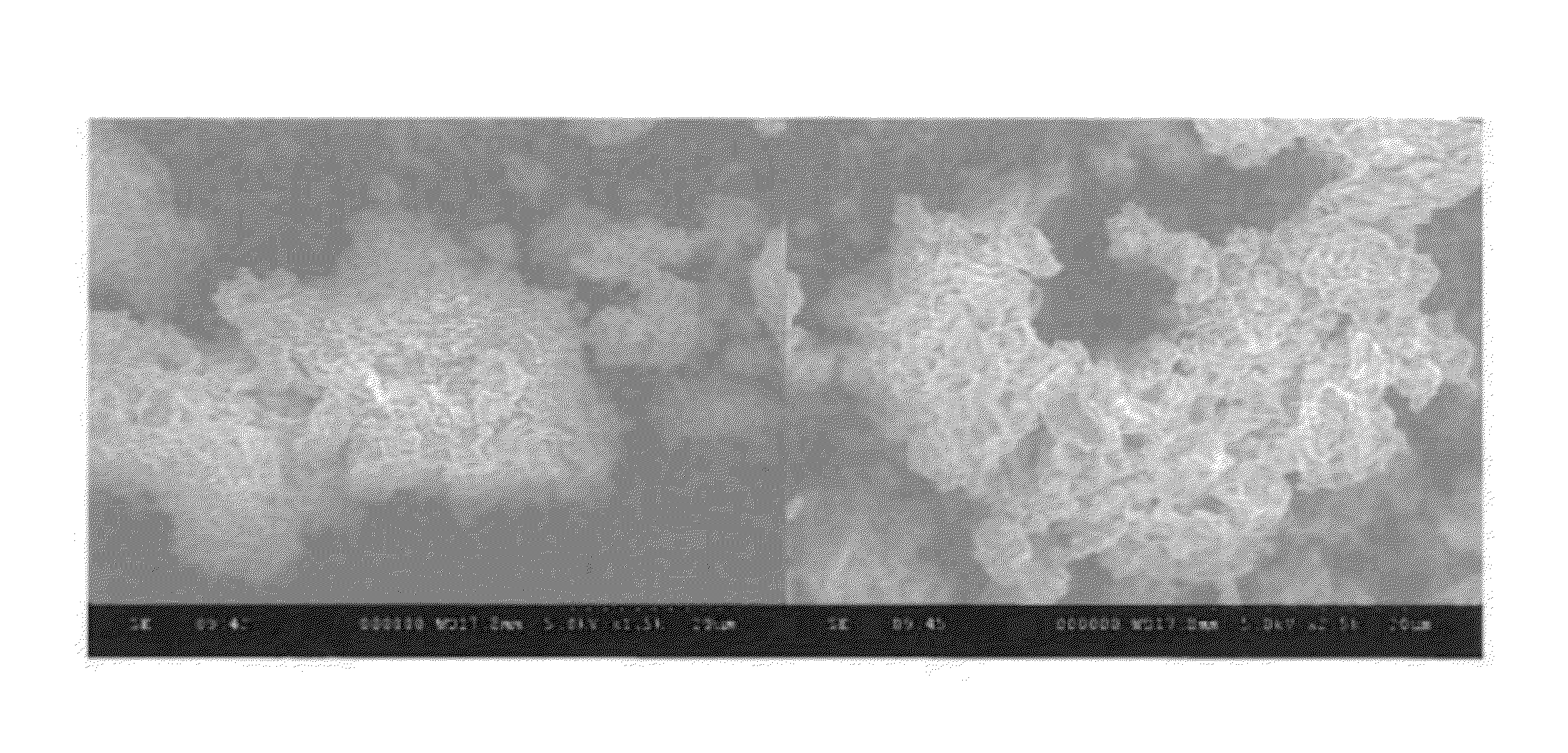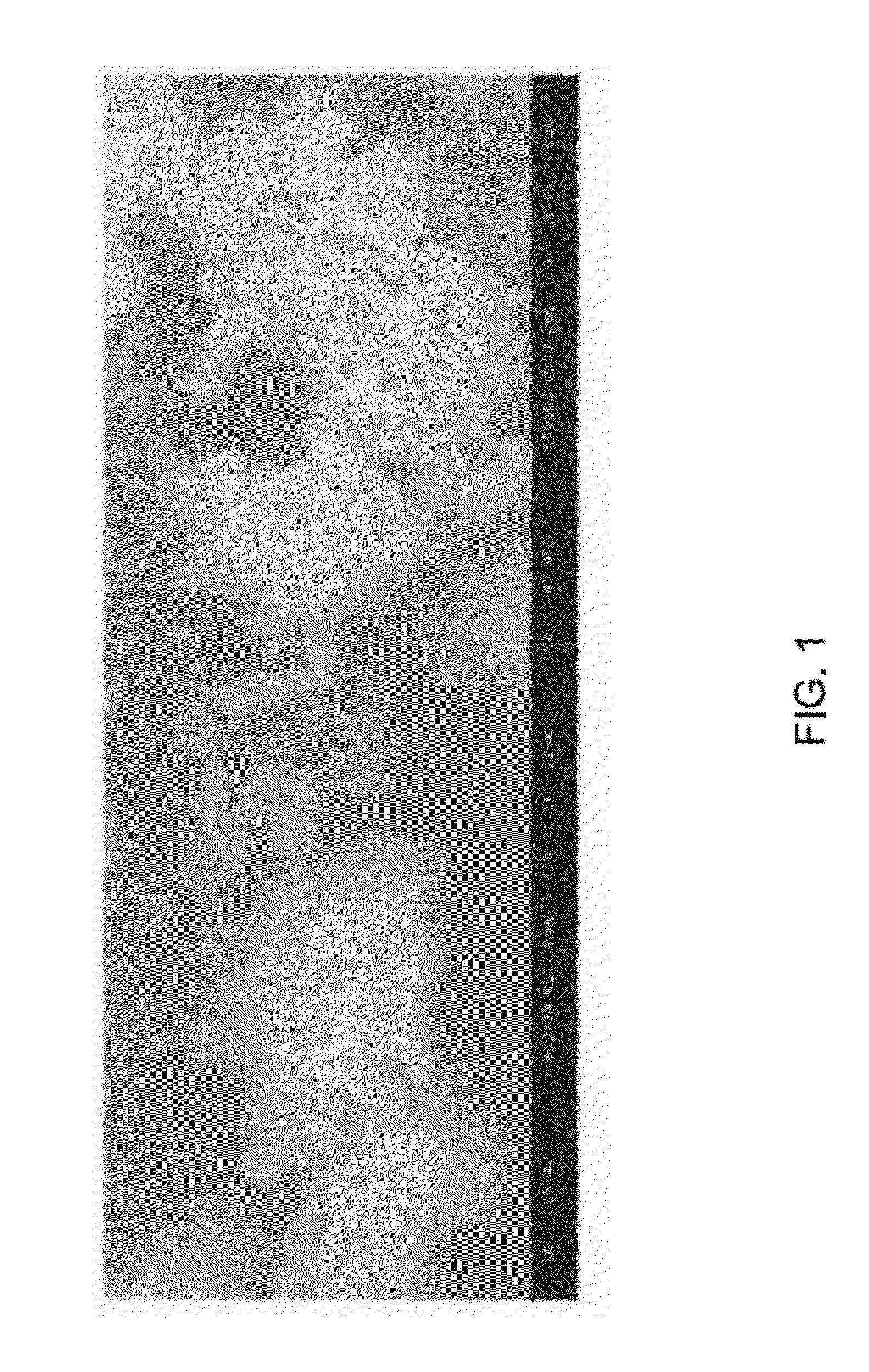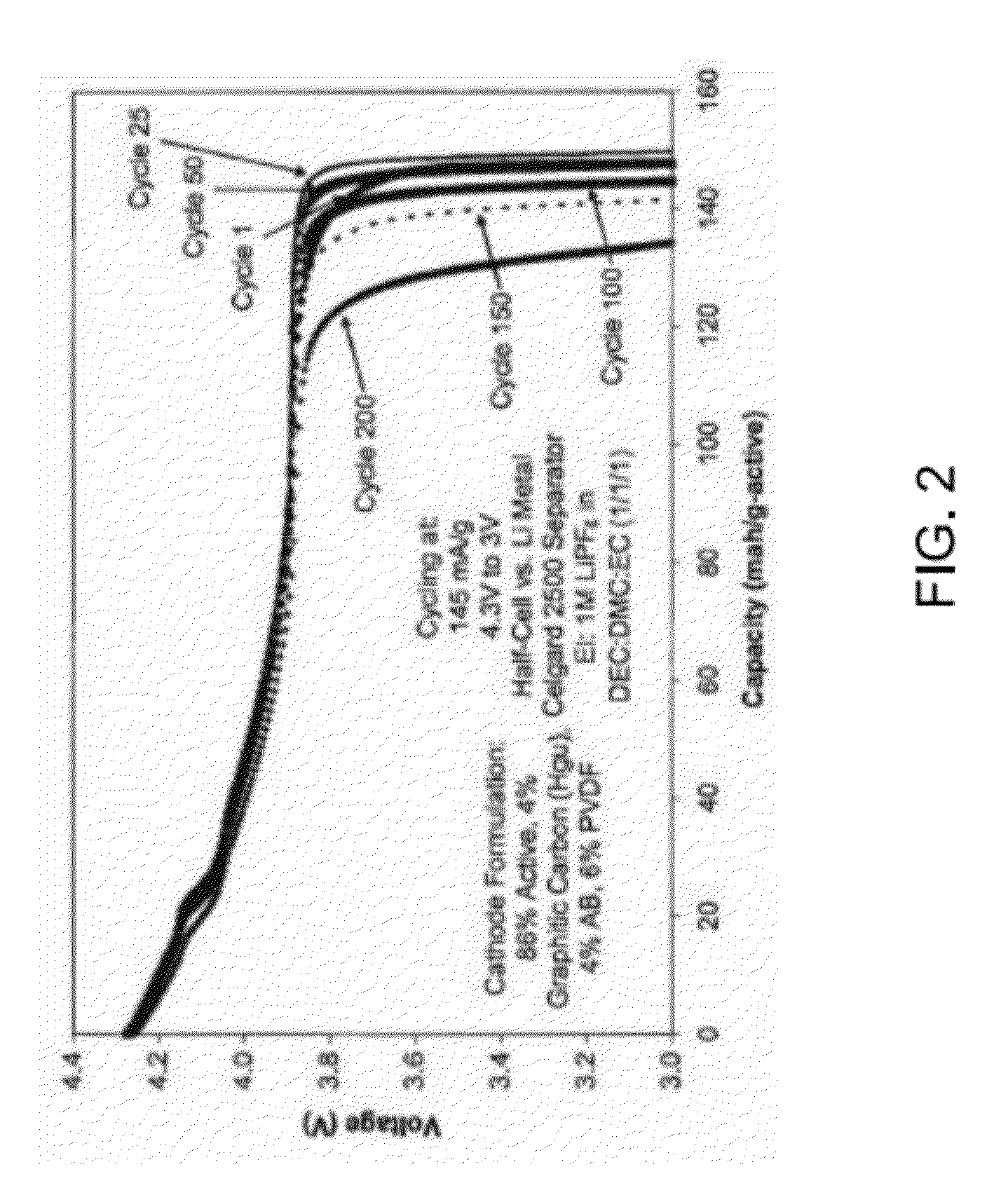Method of Forming a Metal Phosphate Coated Cathode for Improved Cathode Material Safety
a metal phosphate coating and cathode technology, applied in the direction of coatings, cell components, electrical appliances, etc., can solve the problems of incomplete coverage and/or lithium dissolution, limited lithium conductivity, and surface so as to reduce or substantially eliminate the precipitation of lithium salts
- Summary
- Abstract
- Description
- Claims
- Application Information
AI Technical Summary
Benefits of technology
Problems solved by technology
Method used
Image
Examples
example 1
[0035]The coating process for applying a 1% lithium cobalt phosphate coating was performed by the following process. First, 0.2 moles of cobalt (II) nitrate (Co(NO3)2*6H2O, Aldrich #239267) were dissolved in 1 liter of anhydrous isopropanol (IPA). Two moles of ammonium hydrogen phosphate ((NH4)2HPO4, Aldrich #215996) were dissolved in 1 liter of water.
[0036]0.47 ml of cobalt nitrate solution was mixed with 0.03 ml of ammonium hydrogen phosphate solution for each 1 g of cathode material to be formed. Immediately after mixing, the mixture was spin at 3540 RPM (max speed) for 5 minutes using a FlackTek DAC 150FVZ Speedmixer with 2-3 5 mm ceramic milling media per 5-10 ml of solution. Immediately upon completion of mixing, 0.99 g of cathode material was added to the mixture and the mixture was spin again for 5 minutes.
[0037]The mixture was removed from the FlackTek DAC 150FVZ Speedmixer and allowed to dry for 2-3 hours (e.g., until the majority of the solvent was removed) at 50° C. in a...
example 2
[0040]The coating process for applying a 1% lithium cobalt phosphate coating was also performed by the following process. 0.1 M cobalt (II) nitrate (Co(NO3)2*6H2O, Aldrich #239267) was dissolved in isopropanol (IPA, preferably anhydrous). 2 M ammonium hydrogen phosphate ((NH4)2HPO4, Aldrich #215996) was dissolved in water.
[0041]0.93 ml of cobalt nitrate solution was mixed with 0.03 ml of ammonium hydrogen phosphate solution for each 1 g of cathode material to be formed. Immediately after mixing, the mixture was spun at 3540 RPM (max speed) for 5 minutes using a FlackTek DAC 150FVZ Speedmixer with 2-3 5 mm ceramic milling media per 5-10 ml of solution. Immediately upon completion of mixing, 0.99 g of cathode material was added to the mixture and the mixture was spun again for 5 minutes.
[0042]The mixture was removed from the mixer and allowed to dry 1-2 hours (e.g., until the majority of the solvent is removed) at 50° C. to prevent solvent boiling. The mixture was transferred to an ov...
example 3
[0044]Applying a 1.5% coating to a range of cathode powders was carried out using the following method. 27.7 g of Co(NO3)2*6H2O was dissolved in 1 L of NMP. 66 g of (NH4)2HPO4 was dissolved in 1 L of water. 0.701 g of cobalt nitrate solution was weighed out per gram of cathode powder. 0.135 g of phosphate solution was also weighed out per gram of cathode powder. The nitrate and phosphate solutions were mixed using a shear mixer (or similar high speed mixer) for 30 seconds at max speed. After waiting about 30 seconds, the solutions were mixed again for 5 minutes at max speed. In a separate container, 0.75 mL of the phosphate and nitrate liquid mixture was added for every gram of cathode powder. The slurry was mixed at max speed for 30 seconds. The container was vented to release any built up gas. The slurry was mixed again for 1 minute at max speed. The contained was vented again. The mixing and venting of the slurry mixture was repeated a third time. The mixture was placed in a conv...
PUM
 Login to View More
Login to View More Abstract
Description
Claims
Application Information
 Login to View More
Login to View More - R&D
- Intellectual Property
- Life Sciences
- Materials
- Tech Scout
- Unparalleled Data Quality
- Higher Quality Content
- 60% Fewer Hallucinations
Browse by: Latest US Patents, China's latest patents, Technical Efficacy Thesaurus, Application Domain, Technology Topic, Popular Technical Reports.
© 2025 PatSnap. All rights reserved.Legal|Privacy policy|Modern Slavery Act Transparency Statement|Sitemap|About US| Contact US: help@patsnap.com



